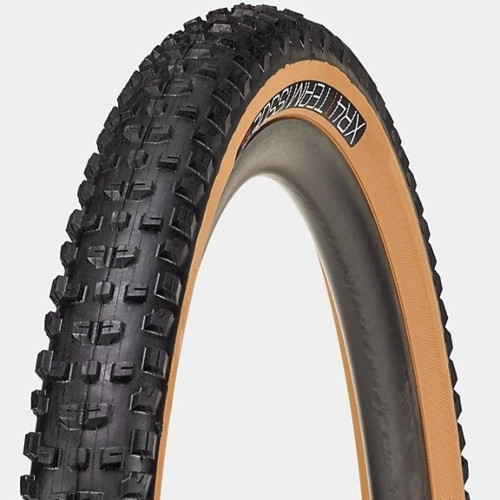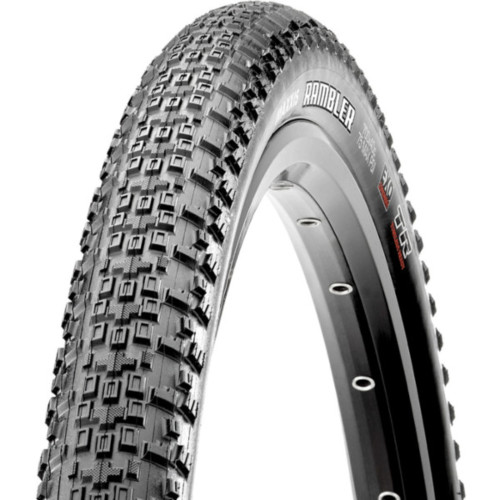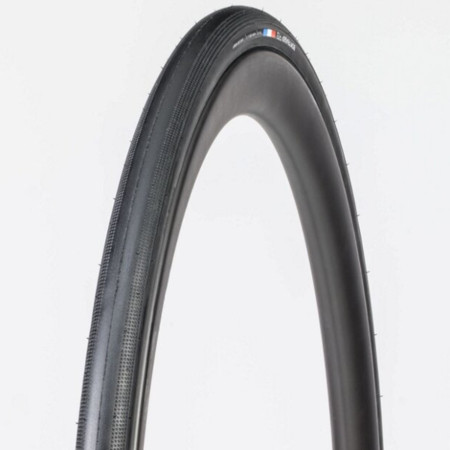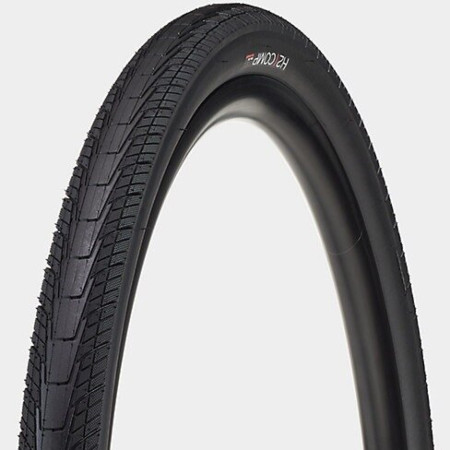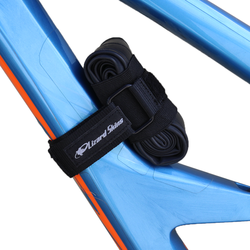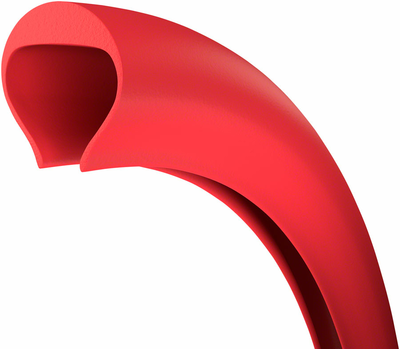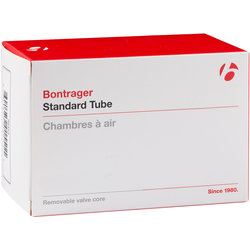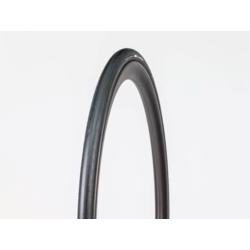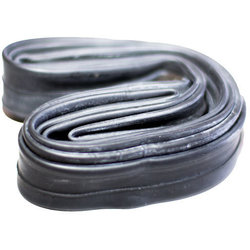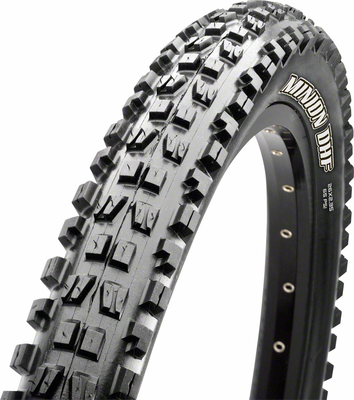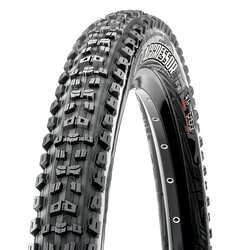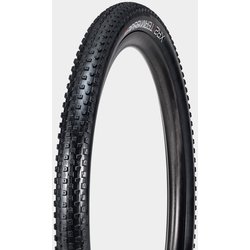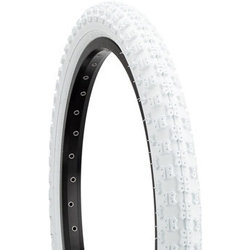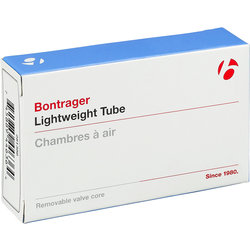
How to Choose Bike Tires
With so many options, how do you choose the right tires for your bike? We’ve got you covered with this helpful article. We'll go over the most common questions customers ask us.
How to tell if you need to replace your bike tires
Here's some quick tips on when you start looking for replacement tires. Knowing you have a busted tire is one thing. Preventing flats before they happen in another. If you can identify these warning signs then you can replace a worn out tire before it ruins your next ride.
Here are some signs that will tell you a tire is ready to be replaced:
- Worn-down tread, especially in the center
- Missing or broken knobs
- Aged and cracked rubber
- Sidewall damage - abrasions, cuts, or 'sweating' sealant
- Warped casing
- Frequent flats
- Poor handling
Finally, time is a killer of tires. Keep track of how old your tires are. Rubber will only keep for two to four years before becoming hard and brittle. A tire may not have any visible signs of wear and still be bad if the rubber is too hard. If your tires are more than five years old, get new ones!
How to choose the right bike tire size
Here are the main factors you need to consider when shopping for new bike tires. First it’s about knowing what will fit, then you can refine your search to pick out the models that will give you the performance you’re after.
Bike Tire Comparison Chart
| Wheel Size (Diameter) | Width | Tread Pattern | |
|---|---|---|---|
| Road Bike Tires | 700c | 23-32mm | Slick |
| Commuter/Hybrid Tires | 700c or 650b | 32-50mm | Semi-slick |
| Gravel Bike Tires | 700c or 650b | 32-45mm | Small knobs |
| Mountain Bike Tires | 26”, 27.5”, 29” | 2.0”-3”+ | Larger knobs |
| Fat Bike Tires | 26", 27.5" | > 3.0" | Larger knobs |
Bike Tire Sizes (Traditional & ISO)
Before you start shopping, you need to know what tire size will fit your wheel and frame. Get the wrong size tire for your wheels and you won’t be going anywhere.
The size is printed on the sidewall of the tire in two ways: Traditional and ISO (International Standard for Organization). The traditional method is usually in bold and easy to read. Consider this Traditional measurement example: 29X2.50. The first number (29) is an approximate measurement (in inches) of the outside diameter of the tire when inflated. The second number (2.50) is an approximate measurement (in inches) of the tire width when inflated.
The Traditional method can lead to confusion at times with less common tire sizes. Sometimes the size is listed as a decimal and other times as a fraction. These always represent different sizes...even if the printed numbers equal each other! Confusing, huh? That's why it's important to be familiar with the ISO measurement also printed on the tire (although often less noticeable).
Using the above example, the ISO measurement would be printed as 63 - 622. The first number (63) is the inflated width (in millimeters). The second number represents the diameter of the bead seat of the rim (in mm). This is an exact measurement and is important in determining if a tire will properly fit a rim.
Road bikes throw in one more twist. The Traditional size printed in bold on the sidewall is usually referring to a French method. For example, a common size you may see is 700X25C. Here, the first number is an approximate measurement (in mm) of the outside diameter of the inflated tire. The second number is the inflated tire width (in mm). The 'C' refers to the rim width. In Utah, we usually only see 'C' labeled rims with a 622mm bead seat diameter. However, rim widths range A through D with each letter representing a different width and bead seat diameter.
Below are some common tire sizes (with the ISO bead seat diameter listed in parentheses):
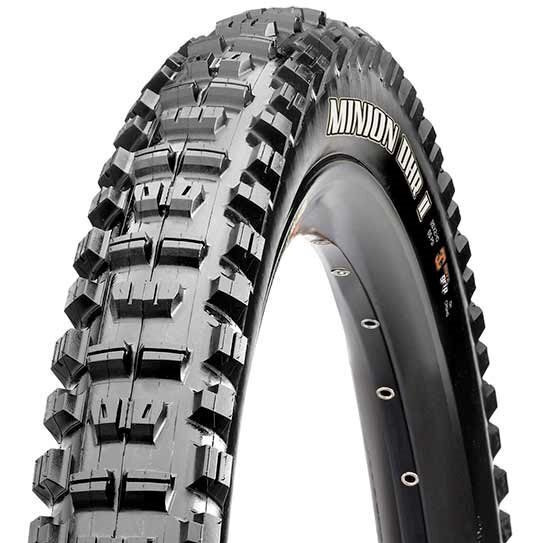
Mountain Bike Tires
- 29 inch: Super fast with lots of rollover power and downhill control. Perfect for the majority of trail riders.
- 27.5 inch: Agile and playful. Great for tight turns, creative lines, and getting air. Gives smaller riders the best performance. Sometimes referred to as 650b.
- 26 inch: Less common these days, mostly found on older mountain bikes but also found on fat tire bikes.
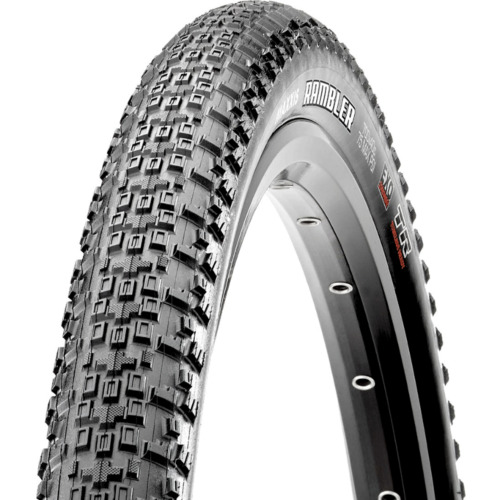
Road/Gravel/Commuter Bike Tires
- 700c: The most common size tire for road, gravel, and commuting. Great for the majority of riders. Tons of options.
- 650b: A wider tire that’s more capable off-road. Great for gravel and anyone looking for more traction and comfort. Sometimes referred to as 27.5 inch.
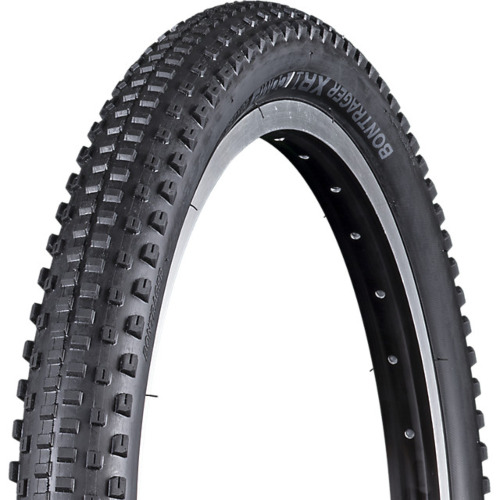
Kids’ Bike Tires
- 12- to 24-inch: Kids’ bike tires are noticeably smaller in diameter than other tires. As children grow, the most common tire sizes on kids’ bikes include 12”, 16”, 20” and 24”.
What’s the difference between 27.5 inch and 650B tires?
This is another example of the French sizing method. 27.5 inch and 650B tires technically refer to the same size as both fit on the same diameter wheel (584mm).
The term 27.5 inch is mostly used in the mountain biking world filling the gap between 29 inch and 26 inch. Tires designated as 27.5 inch are usually (but not always) mountain bike-focused with more tread for off-road riding.
The term 650B is more commonly used with gravel and touring bikes. They typically have less tread than mountain bike tires. They're fast rolling on a variety of surfaces, but they offer more traction and comfort than standard 700C tires. The outside tire diameter of 700C and 650B is very close. This allows many gravel bikes to swap between the two wheel sizes. 700C is fast and efficient with a bigger rim and skinnier tire while 650B is smoother and more comfortable with a smaller rim and fatter tire.
Common Bike Tire Widths
Once you know the size tire you need for your wheels, the next step is to choose the right tire width. Obviously a road rider will be looking for a skinnier tire than a mountain biker, but even small differences in width can make a big difference when it comes to how your bike performs.
Here are the most common bike tire widths:
Mountain Bike Tire Widths
(measured in inches)
- 2.1 - 2.3” : Light and fast - great for XC racing/riding and flowy singletrack
- 2.4 - 2.6” : Trail tires have amazing grip on loose and technical terrain but still roll fast
- 2.8 - 3.0” : Also called 'plus' or 'mid-fat' - great for serious traction and increased comfort but slower rolling
- 3.5 - 5.0” : Fat bike tires for maximum float and traction often used in snowy conditions
Gravel Bike Tire Widths
(measured in mm)
- 38 - 45mm : Speed-focused, great for racing and fast-paced riding
- 47 - 50mm + : Adventure-focused, great traction and comfort for bikepacking and wild rides
- 1.9 - 2.3” : Some gravel bikes accept larger tires even as big as XC MTB tires - these are measured in inches
Guide to Tread Patterns
While the size and width of your tire are important, so too is the actual tread pattern on the surface of the tire. A tire’s tread pattern largely determines the level of grip and rolling resistance and is specifically designed for certain terrains. For example, mountain bike tires feature large knob patterns for better traction on loose terrain. Road bike tires, however, have a slicker tread pattern that rolls faster on smooth surfaces.
There is a wide range of tread patterns out there which means riders can select the best tire that works with their riding style and expected terrain. There are general differences between bike types, though, that can help you narrow down your choices when looking for the right tire for your bike.
Mountain bike tire tread:
Mountain bikes tires have aggressive tread patterns to gain traction on loose terrain such as dirt, mud, and rocky trails. Certain mountain bike disciplines demand specific tread patterns that best suit the conditions.
- Cross-country tires: This tread features smaller, more tightly spaced knobs that allow for the right balance of low rolling resistance and sufficient traction for the fast-paced, firmly packed trails of XC circuits.
- Trail, all-mountain, and enduro tires: Medium-sized knobs provide traction over a range of off-road terrains. There is often a more aggressive tread pattern and larger knobs along the sides of the tire for increased traction when cornering. In enduro riding, front tires typically have a heavier tread pattern than the rear tire.
- Downhill tires: The most aggressive tire tread available, downhill tires have large, tall knobs that can grip even the muddiest conditions. This design helps to rid the tires of mud and debris as they roll, too.
Road bike tire tread:
Slick tires have a tread pattern that is so smooth that it’s barely noticeable. The center of the tire has slick rubber designed for rolling fast on paved roads, with slight tread on the sides to channel away water and boost traction when cornering.
Gravel tire tread:
Splitting the difference between road and mountain tires, gravel tires feature a fast-rolling yet grippy tread pattern. Many gravel tires have a tight grid of small knobs around the entire tire while others have a smooth tread along the center with grippier bits on the side to help with cornering in loose gravel.
Commuter/hybrid bike tire tread:
These tires come with a semi-slick tread pattern that does well in a range of conditions. The relatively slick center tread rolls fast over smooth surfaces like city roads or paved bike paths. The sides are a bit grippier with small knobs or deep channels to direct water away, allowing commuters to safely ride in wet conditions or navigate occasional off-road sections.
How to Find the Right Bike Tube and Valve Size
Selecting the correct inner tube means matching up to the diameter and width of your tire. Conveniently, bike tubes can fit a range of tire widths so you don’t have to go searching for the exact size down to the millimeter. This is because tubes can stretch as they inflate to adapt to a range of widths. For example, a mountain bike tube may list its size as 29 x 1.9-2.3”. When getting a tube, find one with the same diameter as the tire and make sure the tire width falls within the range labeled on the tube’s packaging.
Bike tube valves are either “Presta” or “Schrader”. The hole in your wheel’s rim determines which valve type you need. Presta valves are much narrower with a small nut that unscrews to let air in and out. Remember that some Presta rims have a deep profile that requires long valve lengths that will stick out of the rim enough for inflation. In a pinch, riders can use a Presta tube in a wheel made for Schrader valves, but it’s best to use an adapter to prevent damage to the tube’s valve stem. Schrader valves are wider so they can’t fit into Presta rims and they have an inner pin to control the flow of air.
Other factors to consider when shopping for tires
Rim Width
Just knowing the wheel diameter (29/27.5/etc) isn’t always enough. If you’re thinking of buying a new tire that’s narrower or wider than the one you’re replacing, you’ll also want to make sure the tire you’re shopping for is the right width for the rim.
If you know what rims you have, you can look up its internal width and check the tire manufacturer’s rim width compatibility. This can be a little confusing, and lots of riders don’t know exactly what rims they have. We’re happy to make sure you get the right tire for your wheels, so stop by or give us a call if you want some help!
Max Tire Clearance (frame clearance)
Another factor to consider when considering a tire that’s wider or narrower than the one you’re replacing is frame clearance. Because bikes are designed with specific purposes in mind, their frames and forks have limits on what tires will fit and what won’t.
You can usually look up the max tire clearance of your frame on the bike manufacturer’s site, but again, if you’d like the help of professionals you can stop by or give us a call!
Wire vs Folding Bead Bike Tires
The bead is the part along the inner edge of the tire that hooks into the wheel rim, holding the tire in place when inflated. The two main types of tire beads are wire and folding. Wire beads mean there is a steel wire running along the inside of the tire edge to strengthen it. This bead style is less expensive to make and weighs more than a folding bead.
Folding tires have a flexible bead that allows for a more supple tire and higher TPI, characteristics typically found on higher-end tires. Folding tires can collapse down into a more compact profile, making them better suited for travel or storage.
Quality of Rubber Compound
Not all bike tires are created equal or made from the same stuff. The material of a bike tire is referred to as a compound because it’s not simply natural rubber, but rather a mixture of organic and inorganic polymers. Higher quality compounds are more flexible and durable, providing a supple ride feel and better response on the road or trail. Low quality rubber is typically harder and won’t grip as well to the riding surface. Certain tire compounds prioritize factors like durability or low rolling resistance and others feature a dual-compound setup that can offer a good balance across multiple tire characteristics.
Need to buy tubes or gear for tubeless setup?
Bike tire size FAQs
Tubes vs tubeless bike tires, which is better?
Tubeless bike tires can be used with tubeless compatible rims without inner tubes. Without tubes, you can run lower tire pressures without getting pinch flats (caused by the tube being squished). Lower pressure also offers more comfort and traction off road, so many mountain bikers and gravel riders choose to go tubeless. Tubeless conversion requires tubeless compatible tires and rims, tubeless rim tape, and almost always an air compressor. Because tubeless can be a pain to set up, most commuters and casual riders won’t bother.
How much air should I put in my bike tires?
Every tire has a recommended PSI range on the sidewall, and it’s best to stay within those limits so you don’t get flats or blowouts. You can adjust the air pressure within that range to suit your preference.
What bike tube valves do I need?
If your tube’s valve looks like what’s on your car, you need a Schrader valve. If it's a long and skinny valve with a twistable top, you need a Presta valve.
What is a good TPI for bike tires? What does TPI stand for?
Threads Per Inch. A higher TPI (120) is lighter and more performance oriented for riders who want speed benefits. A 60tpi tire is more durable but slightly heavier.
How much tread do I need for bike tires?
Thinner tires with less tread are faster on smooth surfaces, and wider tires with more tread are better from loose, challenging roads and trails.
Are there bike tires with puncture protection?
Yes, some tires come with reinforced material in the rubber casing that can help prevent punctures. Check the tire’s description to know for sure.

